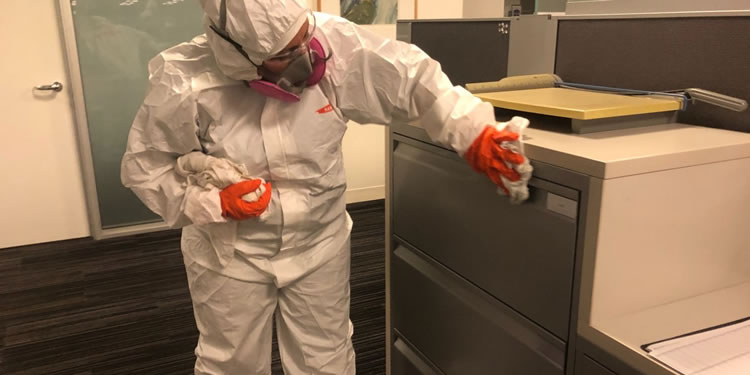Industrial cleaning techniques
From repair after site to cleaning after disaster, including maintenance of offices or administrations, cleaning may require the intervention of professionals. This is called industrial cleaning.
This post presents the business of these specialised companies and the main techniques used.
What is industrial cleaning?
Industrial cleaning refers to an outsourced service carried out by specialists allowing permanent or periodic maintenance of professional premises: offices, equipment, furniture, machines.
Its fields of application are numerous (communities, buildings, shopping centres, factories, laboratories, etc.).
While the objective of hygiene and cleanliness is common to all types of interventions, in fact, cleaning techniques, equipment, processes, chemicals used and regulations differ from one sector to another...
In addition, some areas require the application of strict and precise protocols where the disinfection step plays an essential role, especially in the food industry. The agents will therefore be trained by the competent bodies according to the typology of their sectors of intervention.
Industrial cleaning: what methods?
The different cleaning techniques offered by industrial cleaning professionals cover routine or specialized cleaning for the tertiary sector, but also more complex processes for heavy industry and specialized sectors: cleaning of production equipment, degreasing of machines. tools, stripping, scrubbing, decontamination, ...
We will retain the following six methods.
Cleaning or cleaning-disinfection
It concerns all cleaning or simple maintenance services for business premises or places open to the public: stripping of floors, cleaning at the end of construction sites, clearing of bulky items and trash cans, but also cleaning and washing of floors and surfaces, maintenance of walls and textile coverings, dust removal, window cleaning.
These services can be supplemented by specific and one-off services such as pest control, maintenance of green spaces or even rat control.
For routine maintenance, depending on the surface to be cleaned, cleaning companies will equip their cleaning trolleys with brooms and mops or will use industrial processes (High Speed single-brush, thermoplastic single-brush, etc.)
Dry steam cleaning
This new technology makes it possible to clean, degrease and disinfect surfaces, machines, equipment, etc. while preserving the environment and health. It combines water vapor with / without detergent under high pressure and high temperature. The disinfectant power of steam is very high. It removes the bio film left by manual cleaning and chemical disinfection actions as well as dirt. The method also allows very rapid drying of surfaces.
Bio-cleaning
It is defined as a process intended to reduce the biological contamination of surfaces according to standard NF X 50-790 and is obtained by combining three operations which are carried out in three stages:
• 1 - cleaning with detergent,
• 2 - rinsing with clean water to remove dirt and detergent,
• 3 - application of a disinfectant or a detergent-disinfectant
Dry ice blasting
It is similar to sandblasting and refers to a technology that aims to remove certain coatings on different substrates. The non-abrasive process involves blasting solid dry ice (or dry ice) and requires machines specifically designed for this type of operation. This technique is suitable for cleaning production lines, machine tools, pianos, extractor hoods, etc.
Ultrasonic cleaning
This professional cleaning technique uses the principle of ultrasound whose action is based on the physical phenomenon of cavitation. When sound waves hit a solid surface, they implode, release high pressure, and form micro-jets. The produced effect helps loosen dirt. The method is very efficient on encrustations (blood, albumins, amalgams, cements) and allows the reprocessing of medical devices.
Hydro-stripping
Hydro-stripping involves spraying water at very high-pressure using jets. It is intended for the treatment of surface problems such as road surfaces or pedestrian surfaces (road markings, stains, chewing gum, graffiti, etc.). The technique can be applied to all types of substrates without altering them (asphalt, concrete, granite, etc.). It offers an alternative to sandblasting, sanding, shot-blasting, ... and allows to remove residues, to refurbish dirty supports and to restore the adhesion of surfaces for more safety




No Comments